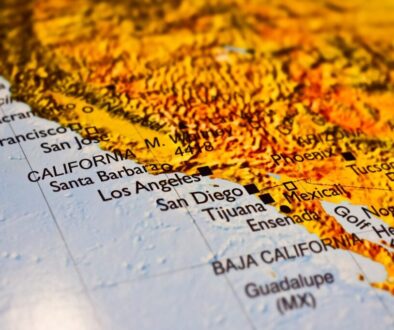Locate your business in Mexico
For nearly two decades, companies benefited from the Chinese miracle: low-cost, large-scale production was the norm. Now, COVID-19 and geopolitical tensions are changing the rules. So now is the time to locate your business in Mexico.
The coronavirus pandemic is prompting some companies to relocate their China-based supply chains to the North American region. But for this to happen, manufacturers will need a solid supply base that spans North, Central, and South America. Given this practical reality, an important message conveyed to the CEOs of the world is “locate your business in Mexico.”
The Mexican government calls it a “strategy of rapprochement”: the country’s Ministry of Economy has launched a campaign to attract companies, which are in China, Japan, and South Korea. Trade officials argue that it is safer to bring production closer to a country like Mexico that enjoys a recently signed trade agreement and a more cordial relationship than China has with the US government.
The Asian country became the center of low-cost global manufacturing in the early 2000s. Then hundreds of Western companies closed their plants in their home countries to relocate there. In 2001, 400 of the Fortune 500 companies had invested in more than 2,000 projects in China, according to a United Nations Conference on Trade and Development, to produce everything from computers and electronic products to telecommunications equipment, automotive components, and petrochemicals.
Now is the time to locate your business in Mexico
For nearly two decades, companies benefited from the Chinese miracle: low-cost, large-scale production. But, over the years, dozens of supply chains became more dependent on Asian manufacturing. Although the products weren’t labeled ‘ made in China, some of the materials or supplies necessary for its production were. These included clothing made with imported fabrics and yarns, car headlights assembled with plastics and electronic components, refrigerators, and washing machines made using Chinese-produced steel.
Although some American companies began to move part of their production in the years before the pandemic, due to commercial tensions between the Asian country and the White House, there were supply chains that continued to be highly dependent on Asia, such as that of semiconductors and steel.
The bubble burst when the coronavirus hit the country in early 2020, and the effects of the pandemic broke supply chains. The result was an immediate and continuous shortage of strategic inputs. These items ranged from semiconductors to high-capacity batteries. This created a supply shock in the global economy that persists to this day. Because of this continuing disruption, now is the time to locate your business in Mexico.
Chinese ports are congested, containers are empty due to lack of production, shortages of critical supplies continue, and air and ocean freight costs have risen. For example, officials in Mexico at JAC, a Chinese vehicle manufacturer, said last month that the cost of importing containerized assembly kits from China had increased between 300% and 400% in the previous year.
Today, the automotive and electronics industries face a shortage of chips whose restocking will not be complete until 2022.
Amid this global supply chain mismatch, analysts recommend the obvious: reduce dependence on China and develop regional chains. “Many companies are looking for an alternative,” says Dale Rogers, a professor at Arizona State University and an expert on the subject.
In February, the consulting firm, Gartner, noted that 33% of global supply chain leaders had moved sourcing and manufacturing activities out of China or planned to do so within the next three years.
A recent report, commissioned by US President Joe Biden, recommended strengthening industrial policy, especially for critical chains such as large-capacity batteries, active pharmaceutical ingredients, and semiconductors. Studies such as this one indicate that now is the perfect time to locate your business in Mexico.
Additionally, the study’s findings acknowledge that it is neither realistic nor desirable for the United States to aim for self-sufficiency by creating purely domestic supply chains. “We will have to work with third countries to coordinate in critical sectors and ensure we maintain adequate access to critical materials,” says Rogers.
Among all the options available, Mexico offers a competitive labor cost similar to that of the Asian country and geographic proximity to the United States.
But it’s not enough
Beyond a competitive labor cost, the Chinese government has invested millions of dollars in ports, roads, and a modern high-speed rail system over the last few decades. “Its logistics infrastructure today is much better than that of any country in the Americas, including the United States,” says Rogers. Furthermore, with 18% of the global population, the Chinese market is one of the most attractive for large-scale production and consumption.
To create a regional supply chain in which Mexico plays a prominent role, it will be necessary to develop strategic alliances with countries in the region. These relationships will aid in ensuring the supply of critical materials and the tax and research incentives required to invest in the building of a world-class logistics infrastructure. Because an essential part of future economic security lies in constructing solid and reliable regional supply chains, now is the time to locate your business in Mexico.





